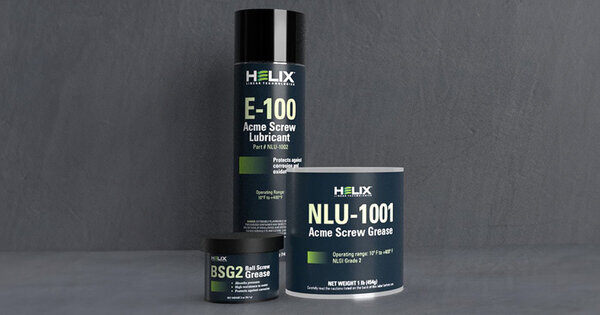Proper lubrication is essential for effective ball screw assembly maintenance. It reduces friction and wear, prevents corrosion and contamination, and ensures the machinery operates with precision and reliability. Understanding the different aspects of lubrication is important because neglecting ball screw maintenance can lead to costly downtime and component failure.
Types of lubrication
There are different types of lubrication that can be used on machinery. Oil and grease are both commonly used to lubricate ball screws, ensuring smooth operations. However, there are certain guidelines you must consider before selecting your lubricant. For instance, grease is typically used in high-temperature environments. Additionally, if your lubricant becomes contaminated with dirt or other particles, it can cause friction. In this case, it is important to replace the lubricant to reduce friction and ensure longer operation times.
Lubrication practices and tips
With the correct lubrication practices, you can easily ensure safe and effective ball screw operations. Before buying a random lubricant, consider these practices to make sure you make the right decision:
- Apply the lubricant properly
- Establish a lubrication schedule
- Perform regular inspections
Apply the lubricant properly
When applying your chosen lubricant, it is important to distribute the product evenly along the length of the ball screw. Using too much product can cause a buildup that can be damaging to the ball screw, so you don’t want the product to be dripping when applying it. It is important to apply the lubricant in a way that allows it to get into the ball nut.
Furthermore, it is important to clean the components of the ball screw. This ensures that all old lubricant, dust and dirt are removed before applying new lubricant. Proper cleaning helps ensure the ball screw performs effectively.
Establish a lubrication schedule
Having a consistent lubrication schedule based on your machinery’s demands is the best way to ensure longevity of the ball screw. Another factor that may contribute to the lubrication schedule is the operational demands of the machinery. If the machinery runs more frequently, lubrication may need to be replaced more often than in a machine with lower usage.
Perform regular inspections
By performing regular inspections, you will know the right time to replace the lubricant. This can also ensure that you are aware of when the ball screws need to be replaced. In addition, performing inspections can help identify other mechanical issues within your machinery, reducing downtime in operations.
Conclusion
Maintaining ball screws with proper lubrication is not just a best practice; it’s a necessity for making sure the ball screw performs with maximum longevity. By selecting the right lubricant, applying it correctly and adhering to a regular maintenance schedule, you can prevent wear on the ball screw, while reducing downtime and enhance precision of your ball screws.



